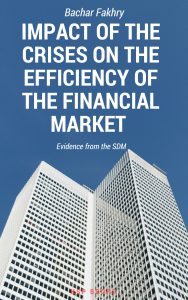Evidence-based Unified Growth Theory (Vol.1)
Synopsis
Unified Growth Theory published by Oded Galor is called unified because it puts together earlier attempts to explain the historical economic growth and the historical growth of population. These attempts were made over many years and by now they form the established knowledge in economics and in demography.
Unfortunately, the past research was difficult because (1) access to data was strongly limited and (2) growth turns out to be represented by strongly deceptive distributions. They create an illusion of stagnation followed by a sudden explosion, while in fact they increase monotonically all the time and there is no sudden transition from a slow to fast growth. Data represented by these distributions have to be carefully and methodically analysed; otherwise conclusions are based on illusions.
Galor was in a far better position than many of the past researchers because he had access to superb and extensive sets of data made available by the world renown economist, Angus Maddison. These data describe economic growth and the growth of population, global, regional and even in individual countries. They are a rich source of information, which Galor failed to use. He made no attempt to analyse them.
There is no explanation for his neglect to analyse data mathematically because (1) he uses mathematics in his theory and thus he is familiar with mathematical procedures and (2) because trajectories describing growth of population and economic growth, while being deceptive, are trivially easy to analyse. No great skill is needed to analyse these distributions. Indeed, there is even no need to analyse them mathematically. Reliable conclusions can be reached just by using different plots of data. However, mathematical analysis, which is simple and easy, helps in a better understanding of the mechanism of growth.
Galor ignored also the earlier evidence published in 1960 that the growth of population during the AD section of time was hyperbolic. Using this information, the obvious next step would be to check whether the same type of growth is applicable to the economic growth.
Rather than using the previously published evidence, he systematically presented data in a suitably distorted way to support preconceived ideas. He could have made an important discovery but he did not. His theory presents nothing new. It is just a repetition of old interpretations of the growth of population and of economic growth, incorrect interpretations because they are contradicted by data. Unified Growth Theory is repeatedly contradicted even by the same data, which were used during its formulation.
The presented here Evidence-based Unified Growth Theory is firmly supported by a rigorous, mathematical analysis of data describing economic growth and the growth of population. It is also called unified because it presents a unified explanation of the growth of population and of economic growth in the past 2,000,000 years.
The terms Malthusian stagnation, Malthusian regime and Malthusian trap will be used in the presented here discussion but it should be remembered that they are incorrect, because Malthus never claimed that his positive checks were causing stagnation or creating a certain regime of growth or a trap. On the contrary, he observed that they stimulated growth and he even suggested that this curious phenomenon should be further investigated. Unfortunately, his observation was ignored, dubious concepts were later introduced and the name of Malthus was questionably attached to them, which Malthus would probably not approve. These phrases are used only because in this form, they are repeatedly used in the published literature.
This book isa compilation of my articles describing the investigation of the growth of population and of economic growth. I start by showing why the established knowledge is scientifically unacceptable. I follow this chapter by the introduction of a simple method of reciprocal values, which makes the analysis of hyperbolic distributions trivially simple. These two introductory chapters are followed by the explanation how the Unified Growth Theory is contradicted by data. These chapters are in turn followed by a detailed study of the growth of human population and of economic growth in the past 2,000,000 years; by the discussion of earlier attempts to explain the mechanism of hyperbolic growth; by the examination of the impacts of Malthusian positive checks; by the examination of impacts of demographic catastrophes; by the examination of the relation between the growth rate and growth trajectories, the essential step leading to the explanation of the mechanism of growth; by the formulation of the general law of growth; and by the explanation of the mechanism of the hyperbolic growth of human population and of the economic growth.
Contents
About Author
ISBN
978-605-2132-52-4
Date of Publication
December 15, 2018
File Size: 5335 KB
Length: xi + 211 pages
This work is licensed under a Creative Commons Attribution 4.0 International License.
















